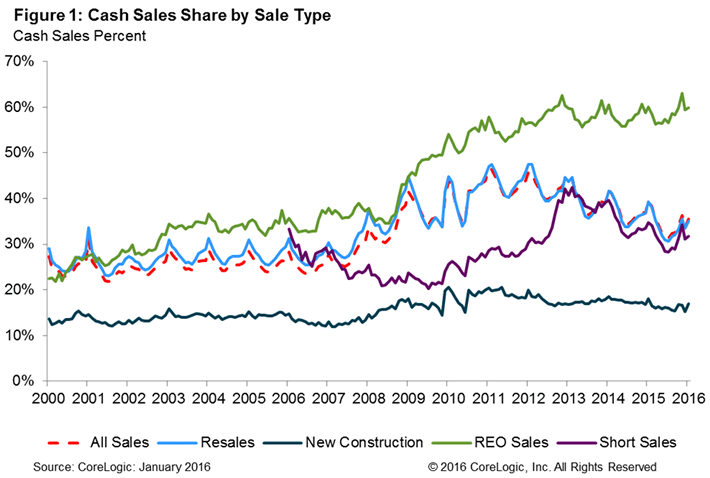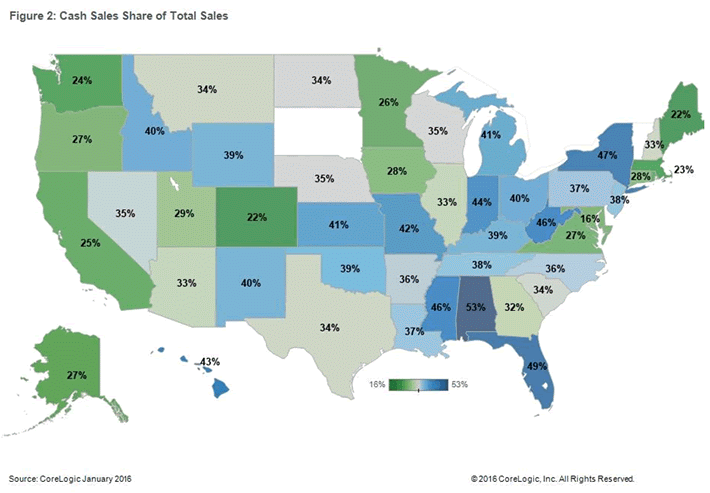All cash sales continued at an elevated level in January, increasing from December but accounting for a substantially lower share of sales than a year earlier. CoreLogic said those sales made up 35.5 percent of residential transaction, up 1.9 percentage points from the previous month, but that cash sales typically tick up in January. The number was 4.2 percentage points lower than in January 2015.
Prior to the housing crisis cash sales typically accounted for about a quarter of all home sales but peaked in January 2011 at 46.6 percent. CoreLogic expects the cash share of sales, if it continues to decline at the present rate, will return to pre-housing crisis levels by the middle of next year.
Purchasers of owned real estate (REO) traditionally employ cash in large numbers of their transactions and that was true in January as well; 59.8 percent of sales were all cash. Resales followed with a 35 percent share and short sales were 31.7 percent cash. New homes consistently have cash sales percentages in the mid-teens, 17 percent in January.

While the percentage of REO sales that were all-cash transactions remained high, REO transactions accounted for only 7.8 percent of all sales in January 2016. In January 2011 when the cash sales share was at its peak, REO sales represented 23.9 percent of total home sales. Resales typically make up the majority of home sales (about 79 percent in January 2016), and therefore have the biggest impact on the total cash sales share.
The largest share of cash sales was in Alabama at 53.1 percent followed by Florida at 49.1 percent, New York (47.4 Percent) and Mississippi and West Virginia, both at 45.8 percent. Of the nation's largest 100 Core Based Statistical Areas (CBSAs) measured by population, Detroit, had the highest cash sales share at 65.6 percent, followed distantly by four Florida metro areas, West Palm Beach-Boca Raton, Miami, Fort Lauderdale, and Cape Coral-Fort Myers, all in the 54 percent to 51 percent range.








